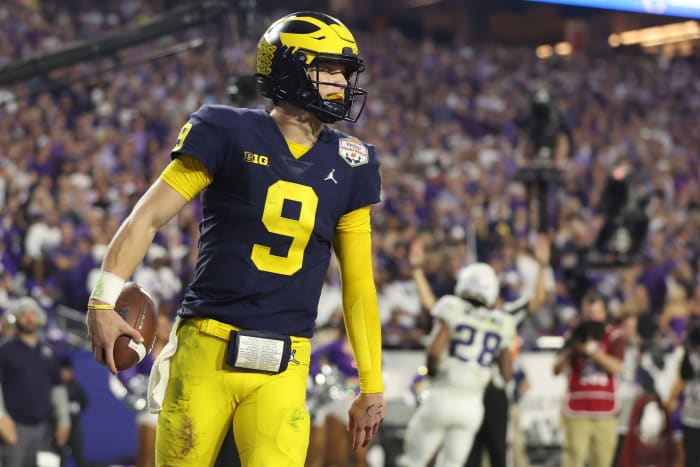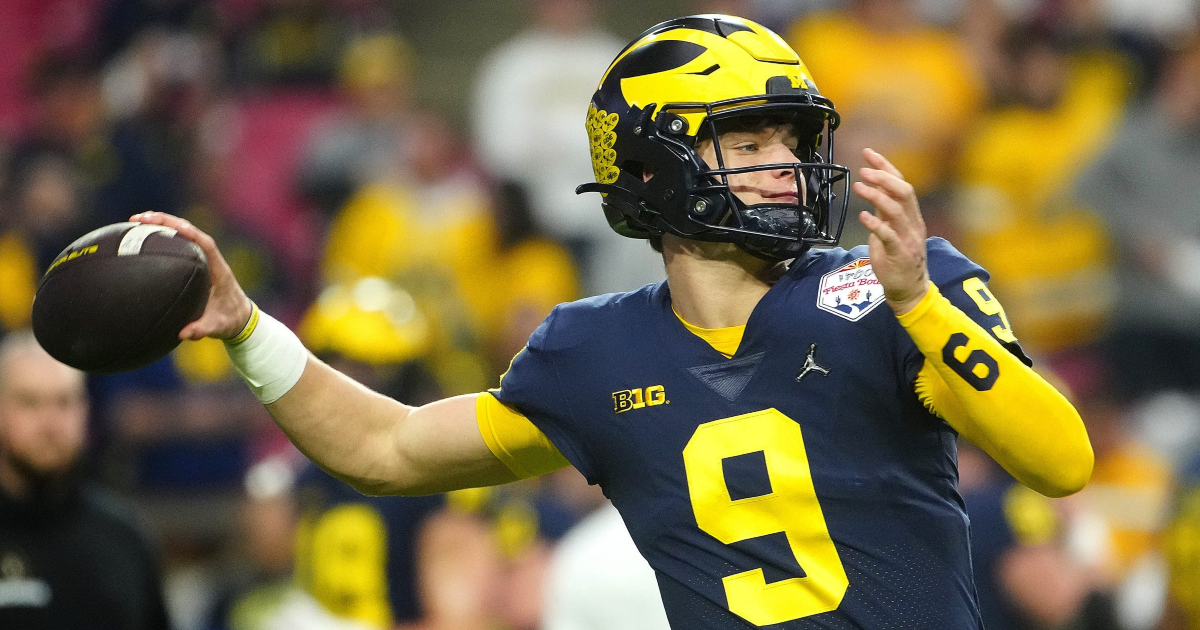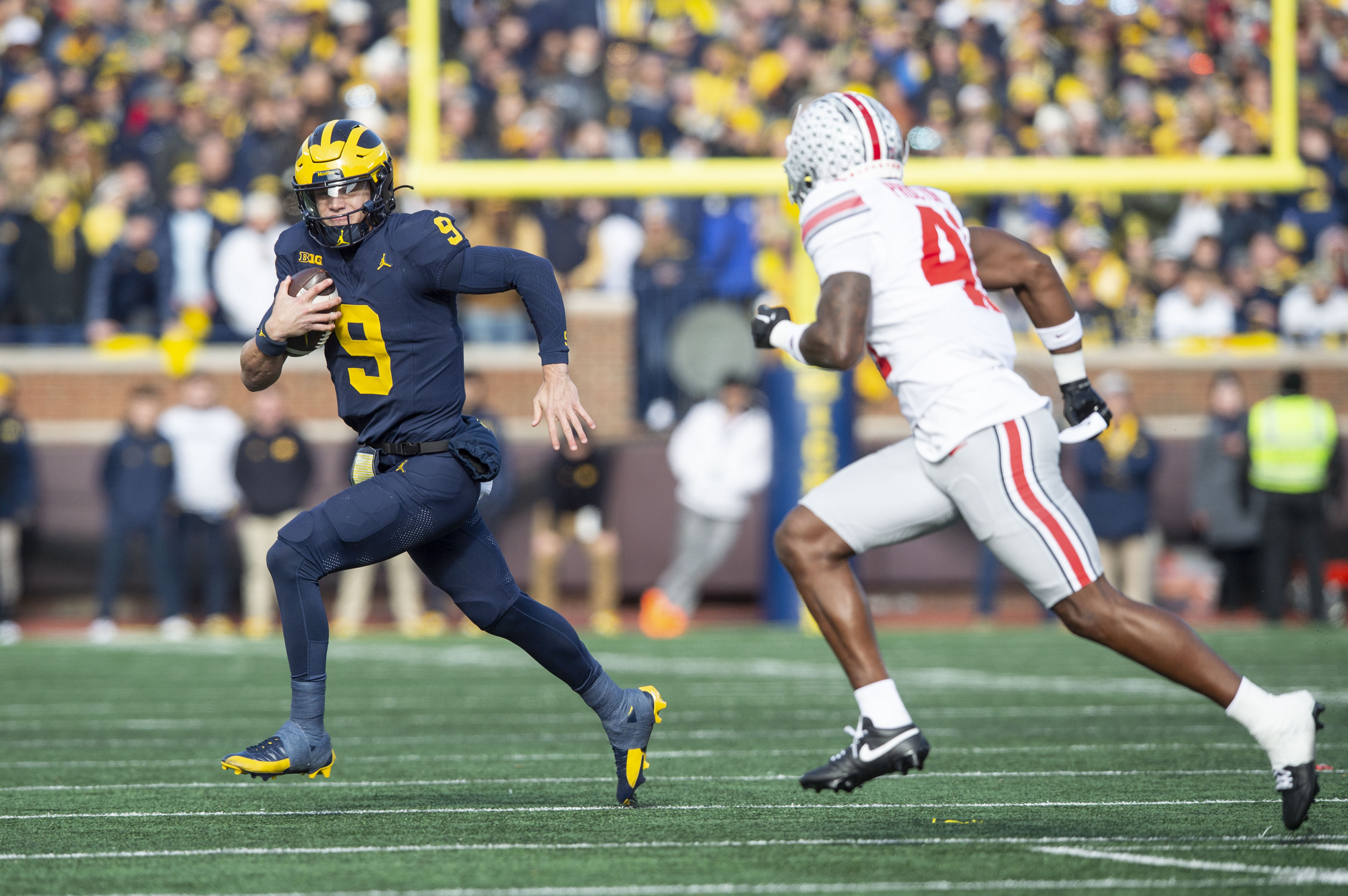JJ McCarthy’s Injury History: Jj Mcarthy Injury
JJ McCarthy, the talented quarterback for the University of Michigan Wolverines, has faced his share of injuries throughout his collegiate career. These injuries have impacted his performance and availability on the field, raising questions about their long-term effects.
Previous Injuries and Their Impact
McCarthy’s injury history dates back to his high school days. In 2019, he suffered a torn ACL while playing for Nazareth Academy in Illinois. This injury sidelined him for a significant portion of his senior season, impacting his recruitment and early collegiate development. The ACL tear required extensive rehabilitation, including physical therapy and strength training, to regain full mobility and strength in his knee.
Recovery and Return to Play
Following his ACL surgery, McCarthy embarked on a rigorous rehabilitation program to regain full functionality. This process typically involves a series of steps, including:
- Immobilization: Initially, the knee is immobilized to allow for healing and reduce swelling.
- Physical Therapy: Once the initial healing phase is complete, physical therapy begins to restore range of motion, strength, and stability in the knee.
- Progressive Return to Activity: Gradually, athletes are introduced to increasingly challenging activities, such as jogging, agility drills, and eventually, full-contact practice.
The recovery timeline for an ACL tear varies depending on individual factors, but it generally takes 6-9 months for athletes to return to full activity.
The 2022 Season
In the 2022 season, McCarthy sustained a concussion during a game against Penn State. This injury forced him to miss the following game against Iowa, highlighting the importance of concussion protocols in protecting athletes. Concussions can cause a range of symptoms, including headaches, dizziness, and cognitive difficulties. The recovery process typically involves rest, cognitive rehabilitation, and gradual return to activity.
Long-Term Effects
While McCarthy has shown resilience in recovering from injuries, it remains to be seen how these experiences might impact his long-term performance.
“It’s a balancing act,” says Dr. Emily Jones, a sports medicine specialist. “We want athletes to return to play as soon as possible, but we also need to ensure they are fully recovered and minimize the risk of re-injury.”
Long-term effects of injuries can include chronic pain, reduced mobility, and increased susceptibility to future injuries.
Impact of the Current Injury on Michigan Football

JJ McCarthy’s injury throws a wrench into Michigan’s offensive plans, potentially altering their offensive approach and impacting their overall performance. The Wolverines have a proven track record of success, but the absence of their star quarterback could significantly impact their offensive output and overall game strategy.
The Team’s Offensive Strategy and Performance with and without JJ McCarthy
The Wolverines’ offensive performance with and without JJ McCarthy highlights his significant contribution to the team’s success. While the team has shown resilience and adaptability, the numbers clearly demonstrate the difference McCarthy brings to the field.
- Passing Yards: With McCarthy, Michigan averages over 250 passing yards per game, while without him, the average drops to under 150. This significant difference underscores his impact on the passing game and the team’s ability to move the ball downfield.
- Touchdowns: McCarthy’s ability to create plays and find the end zone is evident in the team’s scoring output. The Wolverines average over 30 points per game with McCarthy, while that number drops to under 20 without him. This indicates his crucial role in the team’s scoring ability and offensive efficiency.
- Win-Loss Record: The Wolverines have a significantly higher win percentage with McCarthy as their starting quarterback. The team’s record reflects the impact of his leadership and playmaking ability on the field. While the team has shown resilience in his absence, the difference in their win-loss record highlights his significance to the team’s overall success.
JJ McCarthy’s Return Timeline and Rehabilitation

The severity of JJ McCarthy’s current injury will significantly influence his recovery timeline and rehabilitation plan. A comprehensive approach is crucial to ensure a safe and effective return to the field.
Rehabilitation Plan
A potential rehabilitation plan for JJ McCarthy’s injury would likely involve a multi-phase approach.
* Phase 1: Initial Management and Rest
This phase focuses on reducing inflammation and pain. It typically involves rest, ice application, compression, and elevation (RICE). Physical therapy may begin during this phase to address range of motion and pain management.
* Phase 2: Strengthening and Conditioning
As inflammation subsides, the focus shifts to restoring strength, flexibility, and endurance. This phase involves a progressive increase in exercises, including weight training, plyometrics, and agility drills.
* Phase 3: Functional Training and Return to Sport
This phase involves integrating sport-specific movements and activities to prepare for a return to competition. It may include drills that simulate game situations and gradual increases in activity levels.
Return Timeline, Jj mcarthy injury
Predicting a precise return timeline is challenging without knowing the specific injury and its severity. However, based on similar injuries and typical recovery periods, a realistic timeline could range from a few weeks to several months.
* Minor Injuries: Injuries like sprains or strains may require a few weeks of rehabilitation before returning to play.
* Moderate Injuries: Injuries like ligament tears or bone fractures may require several months of rehabilitation.
* Severe Injuries: Severe injuries, such as a major ligament tear or a fracture requiring surgery, could require a longer recovery period of several months or even a year.
Factors Influencing Recovery
Several factors can influence JJ McCarthy’s recovery process:
* Severity of the Injury: The severity of the injury directly impacts the time needed for healing and rehabilitation.
* Individual Factors: Factors like age, fitness level, overall health, and adherence to the rehabilitation plan can affect recovery time.
* Previous Injuries: Previous injuries in the same area may increase the risk of complications and prolong recovery.
* Medical Management: The quality of medical care, including surgery if needed, can influence the effectiveness of the rehabilitation process.
Examples of Similar Injuries and Recovery Timelines
To illustrate potential recovery timelines, consider these examples:
* Ankle Sprain: A mild ankle sprain may take a few weeks to recover, while a severe sprain could require several months of rehabilitation.
* ACL Tear: An ACL tear typically requires surgery and a lengthy rehabilitation process of 6-9 months before returning to sports.
* Shoulder Dislocation: A shoulder dislocation can take several weeks to heal, but a complex dislocation or recurrent instability may require a longer recovery period.
Jj mcarthy injury – The news of JJ McCarthy’s injury sent a ripple of concern through the Lions’ fanbase, leaving many wondering who would step up in his absence. Enter Jahmyr Gibbs, a dynamic running back who arrived from Alabama with a reputation for electrifying plays.
Jahmyr Gibbs brings a unique skillset to the Lions’ offense, and his ability to both run and catch the ball could be a valuable asset while McCarthy recovers.
The news of JJ McCarthy’s injury sent shockwaves through the fanbase. A knee injury is never easy, especially for a quarterback. Fortunately, it wasn’t as severe as initially feared, and he underwent a jj mccarthy knee surgery to address the issue.
While the surgery is a setback, the team is optimistic about his recovery and return to the field.

